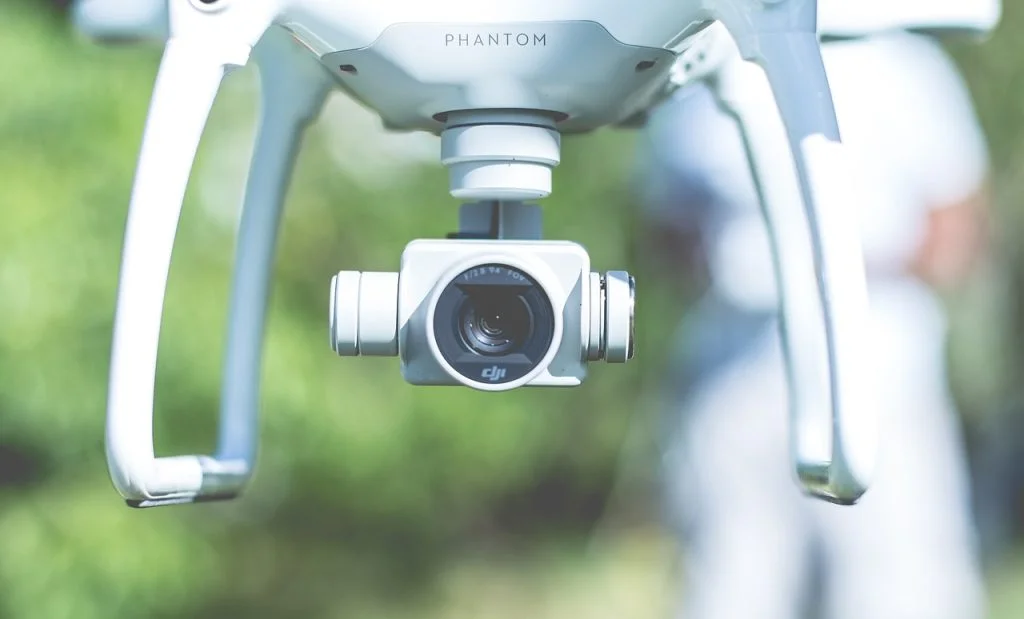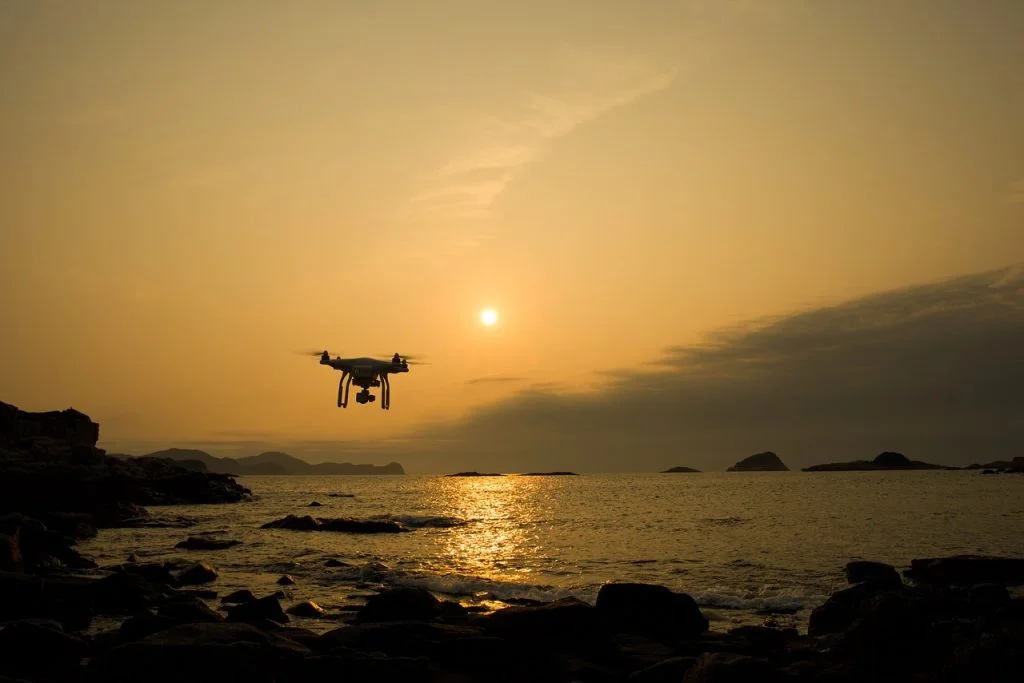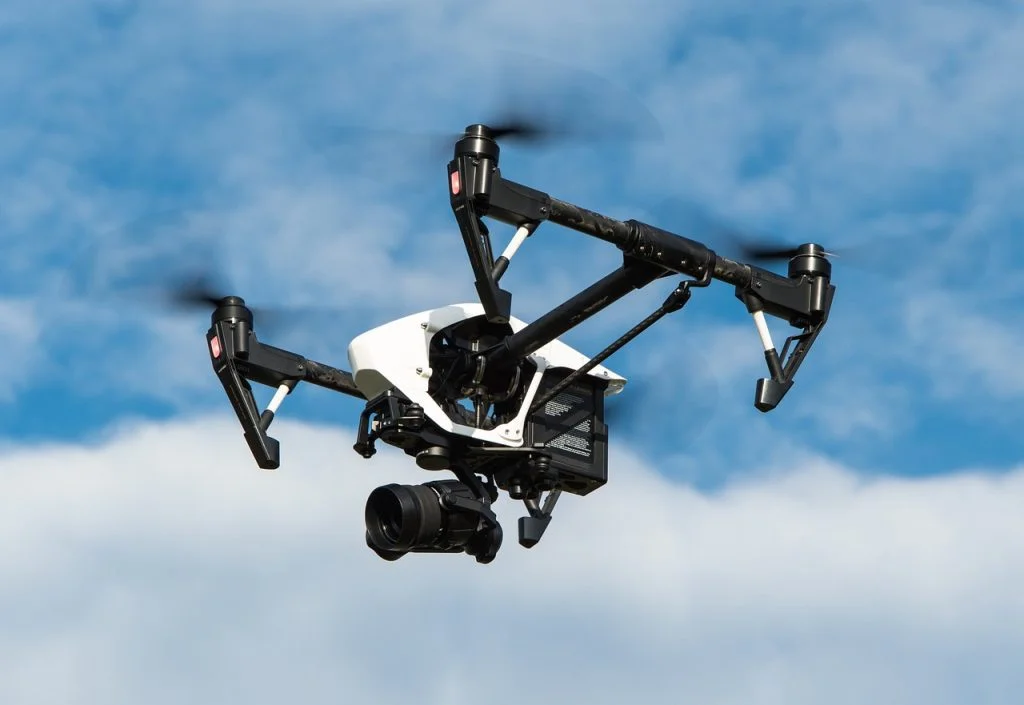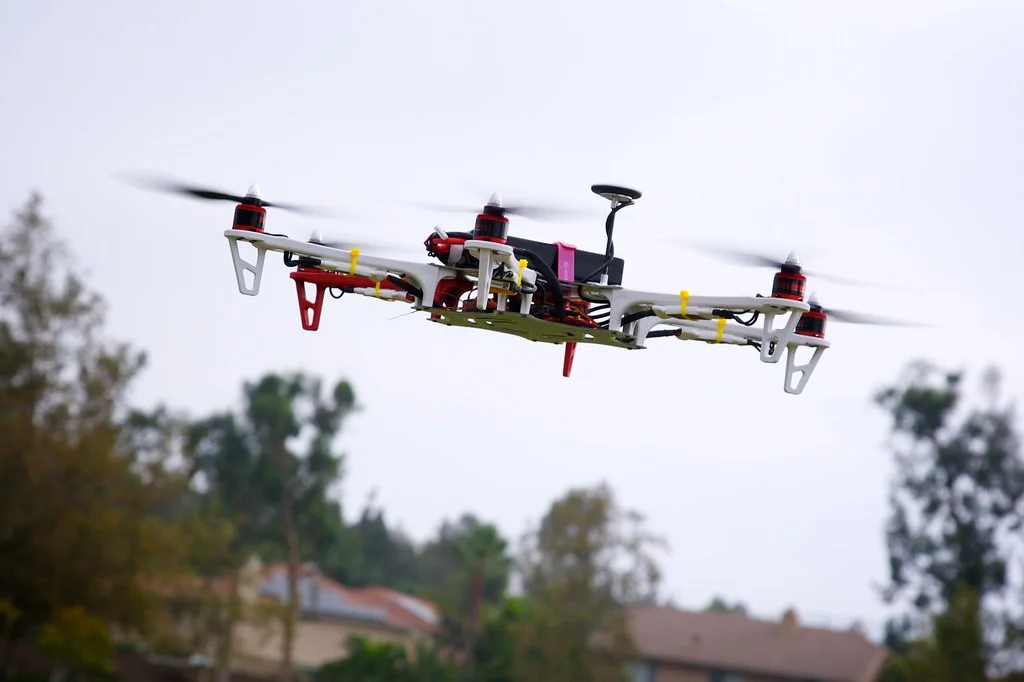The first time I flew a drone, it decided to play hide-and-seek… in a tree! I spent hours negotiating with the stubborn machine perched high above. Have you ever tried sweet-talking a piece of tech?
Not easy. But that misadventure kicked off an obsession. Now, I’m somewhat of a drone enthusiast. And in between my tree rescues and occasional drone dance-offs, I’ve unearthed some downright hilarious and astonishing facts about these flying wonders.
Some people wait for a sign from above. I just wait for my drone to come back.
Unknown
Drone Facts
You can enjoy the facts I gathered for you. These are some details about drones that I gathered from personal experience and research. Let’s have a look, and don’t forget to take the quiz at the bottom of the article to see if you are a drone enthusiast after all.
- Originally, the word “drone” denoted pilotless aircraft employed by the military for training and target practice.
- Drones typically operate using distinct frequencies: 2.4 GHz for controlling their flight and 5.8 GHz for transmitting video.
- In 2013, Amazon unveiled its drone delivery project named “Prime Air.”
- The MQ-9 Reaper is a prominent armed drone used by the U.S. military, capable of remaining airborne for up to 14 hours when fully equipped.
- Gyroscopes are a key technology in drones, especially quadcopters, for ensuring stable and balanced flight.
- The RoboBee is the world’s tiniest drone, marginally heavier than a toothpick.

- Many drones feature an automatic “return to home” function, which activates to bring them back to their starting point if they lose signal or run low on battery.
- Drone racing is an emerging sport where participants use first-person view (FPV) goggles to steer through courses at high velocities.
- Certain drones, like the Aerovironment Nano Hummingbird, are designed to resemble birds or insects, serving surveillance roles.
- Contemporary drones can endure wind speeds between 20-30 mph, with some advanced models capable of withstanding even stronger gusts.
- Consumer drones can typically ascend to heights of about 500 meters, whereas professional models may reach significantly greater altitudes.
- The record for the longest drone flight currently stands at over 25 hours.
- By 2021, it is expected that the U.S. will have registered more than 1.7 million drones.
- DJI, a Chinese company, is recognized as the largest manufacturer of consumer drones globally.
- The practice of using drones for agricultural tasks like crop monitoring and spraying is termed “precision agriculture.”
- Drones equipped with thermal imaging are frequently utilized in search and rescue missions.
- Some drones are capable of flying in adverse weather conditions like rain and snow, although consulting the manufacturer’s guidelines is advisable.
- The initial recorded use of a drone strike occurred in Afghanistan in 2002.
- Beyond cameras, drones can also be equipped with various sensors, such as LIDAR, for purposes like mapping and 3D modeling.

- Professional filmmaking drones are capable of carrying substantial camera gear, including models like the RED Dragon or ARRI ALEXA Mini.
- In the U.S., the FAA mandates that drone operators maintain visual line of sight with their drones.
- Drones play a role in wildlife monitoring and anti-poaching initiatives in numerous national parks and conservation areas.
- In some regions, drones are instrumental in delivering medical supplies to remote locales.
- The “follow me” function in many drones enables them to autonomously track and follow moving objects or individuals.
- Drone light shows, involving hundreds or thousands of drones flying in formation to create animated light displays, are becoming increasingly popular.
- Drones have been deployed to study and gather data from active volcanoes.
- There are drones specifically designed for indoor usage, featuring protective cages around their propellers.
- Underwater drones, also known as Remotely Operated Vehicles (ROVs), are utilized in marine research and exploration.
- The Guinness World Record for the largest number of drones flown simultaneously features over 3,000 drones.
- Military research is exploring the use of drone swarms for coordinated surveillance and defense operations.
- Advanced drones with the “obstacle avoidance” feature utilize sensors to detect and evade obstacles automatically during flight.
- Drones can be controlled through various methods, including remote controls, smartphones, tablets, and even hand gestures.
- The global drone market is anticipated to surpass $40 billion by 2025.
- Fixed-wing drones, which differ from quadcopters with their airplane-like structure, are generally more suited for long-distance flights.
- Tethered drones, connected to a ground station, can operate for extended periods due to continuous power supply.
- Experimental delivery drones are being tested for transporting diverse items, ranging from pizzas to packages, directly to consumers.
- Solar-powered drones can remain in flight for prolonged durations.

- Drones are vital for providing immediate data during natural disasters like hurricanes, earthquakes, or floods.
- Most drone accidents are attributed to pilot errors, including collisions or loss of signal.
- Advanced drones incorporate AI and machine learning for enhanced image recognition and autonomous flying capabilities.
- Drones have been utilized in reforestation efforts, planting trees in deforested areas by dispersing biodegradable seed pods.
- Many airports have implemented “drone detection systems” to prevent interference with air traffic.
- Drones are restricted from flying in “no-fly zones” near sensitive locations such as government facilities, military bases, or vital infrastructure.
- Journalists and news agencies are increasingly using drones for aerial coverage of events and investigative journalism.
- Some drones come equipped with “zoom cameras” for detailed inspections without needing to get too close.

- Recreational drone flyers are generally advised to keep their drones below 400 feet to prevent interference with manned aircraft.
- Counter-drone technologies, like drone jammers, are being developed to safeguard sensitive areas from unauthorized drone activities.
- In 2020, the FAA implemented the Remote ID rule, requiring U.S. drones to provide identification and location details.
- Drones have been employed in archaeological projects, capturing detailed aerial imagery to assist researchers in mapping and studying ancient sites.
- Commercial drones are increasingly used for building inspections, allowing for safer and more efficient examination of high-rise structures.
Drone Myths

Are drones dangerous? Are they here to spy on you? These are some myths that you are going to hear about, but let’s dive in and see what the truth is.
- Concerns Over Privacy.
Fact: Picture a curious teenager with their first camera, excitedly capturing the beauty of nature or city skylines. That’s the true spirit of most drone pilots, eager to capture beauty, not personal secrets.
Myth: Every person with a smartphone is secretly snapping pictures of you. - Complexity and Play.
Fact: Remember when you first tried to balance on a bicycle? Or when you attempted to make that perfect pancake flip? That’s what flying a drone feels like at first. Challenging but incredibly rewarding with practice.
Myth: Drones are like unicycle juggling acts. Impossible for the average person to master. - Safety and Buzzing Annoyances.
Fact: Think of drones as pets. Just as you wouldn’t let your cat run into traffic, drones have built-in features to prevent accidents. They’re not perfect, but neither are our playful pets.
Myth: Drones are there only to cause chaos. - The Legal Landscape.
Fact: Remember when you first learned road signs for your driving test? Drones have a similar learning curve. With a bit of studying, you understand where they can roam freely and where they should steer clear.
Myth: It’s like believing all roads lead to Rome. Drones can go anywhere without consequences. - Drones and their Jobs.
Fact: It’s not just about those jaw-dropping Instagram shots. Drones are the unsung heroes in many fields. They’re like that friend who’s good at both photography and emergency first-aid. A surprising combination of skills.
Myth: Drones are only the life of the party. They are there to capture dance moves and beautiful landscapes.
No products found.
Drone FAQ

Is that a bird, a plane… or my online order? Let’s see some FAQs that you can find online about drones.
- Can drones fly in rain?
Ever tried using your phone in the rain? Not the best idea, right? Most drones feel the same way. They’re not big fans of showers. But hey, some beefed-up industrial drones can handle a drizzle. - Why won’t drone delivery work?
Drone delivery sounds super, but there’s a lot to consider: strict flight rules, the high-stakes game of dodge-the-tree, battery life, and unpredictable weather. It’s a bit more complicated than just “add to cart” and wait! - Will drones replace fighter jets?
Think of drones as the new interns, they’ve got potential but aren’t taking over just yet. While drones have perks, fighter jets have the human touch (literally). Who would you trust more in a tough spot: R2-D2 or Luke Skywalker? - Can drones see through walls?
Most drones can’t. So, no need to worry about a drone peeking into your secret throne room… yet. But some high-tech drones for special tasks are getting a bit nosy with special sensors. - Can drones fly at night?
Yes! But, like us after dark, they might need some lights on. And just as you might need permission to throw a late-night party, drones often need a special pass to fly at night.
Drone Quiz

It’s time for another quiz. Keep in mind that this is not a quiz to get you a permit for drone but it will be a nice test of your general knowledge on the topic. If you get all of these questions wrong, a drone will personally deliver you a beginner’s guide to drones.
Final Thoughts
Who knew there were so many drone fun facts, right? From sky selfies to those accidental tree landings, drones sure add something to the tech world.
Before we sign off, here’s a question for you: If drones had personalities, do you think yours would be the adventurous explorer or the shy hoverer? Until next time, keep those propellers spinning and your drone humor flying high.


